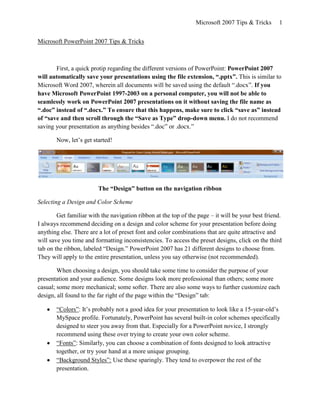The document provides tips for using Microsoft PowerPoint 2007, including choosing a design and color scheme, inserting different types of content like tables, charts, and pictures, adding hyperlinks and animations, and playing the slide show. Key recommendations are to select a design before adding content, adhere to the "rule of sevens" to avoid cluttered slides, and use animations sparingly so they don't distract from the presentation.




